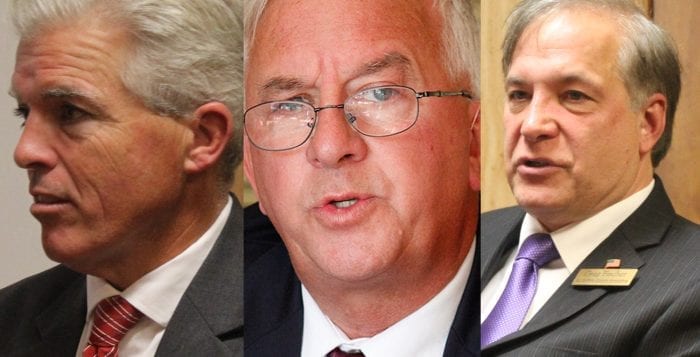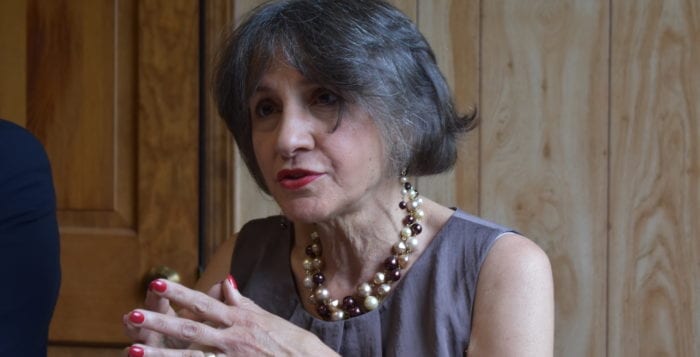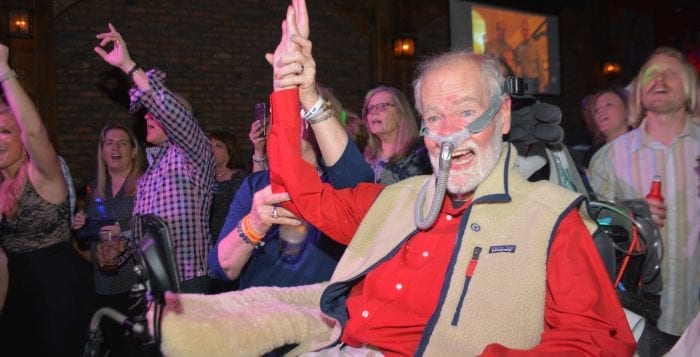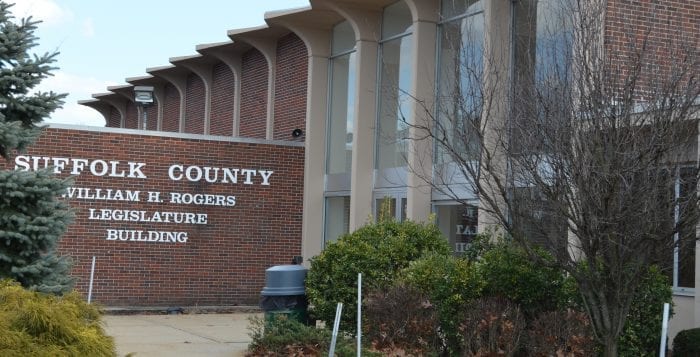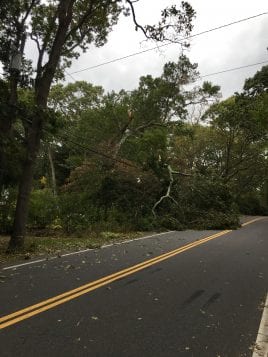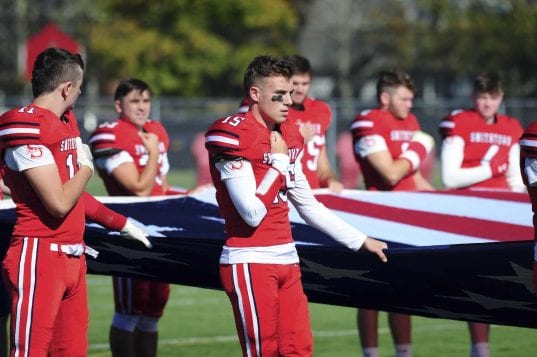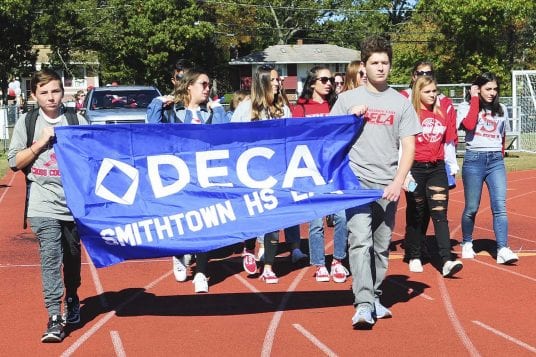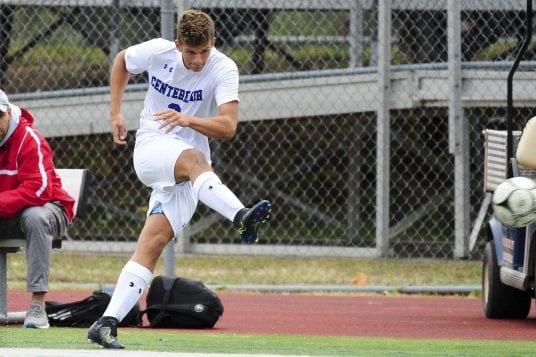It is a three-man race for the Suffolk County executive seat this year. Incumbent Steve Bellone (D) is vying to secure a final term after coming into office in 2012. Suffolk County Comptroller John Kennedy Jr. (R) and Libertarian candidate Greg Fischer, from Calverton, are looking to unseat Bellone in this year’s election.
Some topics discussed were the county finances, the opioid and MS-13 situations and Suffolk’s water quality.
Suffolk County finances
The status of the county’s finances continues to be a pressing issue since Thomas DiNapoli (D), the New York State comptroller, released a report saying Suffolk was under the most “significant fiscal stress” of any county — with Nassau — in the state in 2018 for the second year in a row. Suffolk had an operating deficit of about $26.5 million and a general fund balance deficit of $285 million.
“When I came into office in 2012 the county was on the brink of bankruptcy, we had a $500 million accumulated deficit.”
— Steve Bellone
Bellone touted since he took office seven years ago, he has made the county government more streamlined, fully eliminated the existing operating deficit and has helped achieve an operating surplus for two consecutive years.
“When I came into office in 2012 the county was on the brink of bankruptcy, we had a $500 million accumulated deficit,” he said. “The county government was completely dysfunctional. Everyone was saying we were heading in the same direction as Nassau County, we were going to have a control board. I told them that was not going to happen, and we made the tough decisions.”
Since Bellone took office, the county government has cut close to 1,300 municipal jobs looking to reduce expenditures.
Kennedy, who has been the county comptroller for the past five years, said his office has been auditing aggressively, has saved the county upward of $56 million and helped refinance its pipeline debt. He said the county is currently $883 million in operating debt and has a $91 million general fund balance deficit.
The longtime Suffolk politician argued that the county would probably have to cut back at least $50-60 million from the current operating budget.
“There’s things in life, you have your wants and your needs — that’s where we are at [right now],” he said. “We have departments that are not running properly, we have to consolidate.”
Kennedy said he would look to implement percentage decreases across the board for contract agencies and in some cases suspend services, similarly to what the county Legislature did in 2008 in the midst of a recession.
“I am running based on the 15 years of public service — I think I can put us back to balance,” he said.
Fischer put it simply that the county is no different than a big bankrupt company.
“We are rated lower than Nassau County, which has financial control boards,” he said. “We can’t rely on the state for anything right now.”
If elected, Fischer would freeze further increases in spending immediately as well as freeze future hiring and begin cross-training county employees.
“This is something that has to be done now,” he said.
Opioids/MS-13
On opioids, Kennedy said the county has had an addiction issue long before oxycodone was ever cooked up, mentioning morphine, methadone and crystal meth that have been a concern since the late ’80s.
He said treatment for addicts is one of his main concerns.
“We have fewer treatment beds in Suffolk County than five to 10 years ago,” Kennedy said. “Availability of treatment beds is the most pressing need right now.”
“I am running based on the 15 years of public service — I think I can put us back to balance.”
— John Kennedy Jr.
Many Republicans have criticized the Bellone administration for the closure and sale of the Foley Center in Yaphank, which they contend would have helped in the fight against the opioid crisis.
The county comptroller said that the governor has to be more proactive in helping the county. In addition, he said law enforcement needs to be more effective.
Fischer said he lost his brother to heroin and is acutely aware of what is going on in the fight.
“This is horribly addictive stuff — I believe in ‘scared straight’ programs, bringing in junkies into schools and scaring the crap out of kids,” he said. “I do want more treatment and prevention not just more cops.”
The county executive maintained a comprehensive approach is the only way to solve the opioids crisis.
He agreed with Kennedy and Fischer that local law enforcement plays a big part, but that prevention is just as important.
Bellone touted partnerships with community-based groups and schools and opening DASH, a substance abuse and mental health center in Hauppauge, that is seeing patients 24/7.
“The inability to provide adequate treatment has been a failure of our country,” he said. “Once you become addicted it is very hard to extricate yourself from it. We have made progress — the state has helped us.”
He also mentioned that the county has decided to sue the people responsible for the opioid epidemic.
“Though we can’t restore the lives lost, the Sackler family [which controls Purdue Pharma] should be made to pay,” he said.
On MS-13, Bellone said the Suffolk County Police Department has led the fight against the gang and has helped in getting the lowest crime rate in the history of the county.
Kennedy and Fischer contend that it is the federal government’s involvement that has swayed the tide in the fight. Though all three candidates agree that while strides have been made, there needs to be continued law enforcement efforts from both the local and federal levels.
Suffolk’s water quality
Bellone called water quality “the most significant issue of our time in Suffolk County.”
“Climate change will have certain impacts, but if we don’t address water quality, we are sacrificing the future of the county — we cannot sustain what this place is without protecting water,” he said.
Bellone said water quality is not only vital for the county’s economy but also to local tourism which brings in billions of dollars each year.
“It is one of the reasons why people live here and for the quality of life,” he said.
The county executive defended his septic improvement program which he launched in 2017, saying it has allowed homeowners to replace outdated septic systems and cesspools. He also mentioned that it has helped reduce contaminants in the groundwater.
“We have departments that are not running properly, we have to consolidate.”
— John Kennedy Jr.
Kennedy said his main concern is to continue to identify any suspected contaminants in our groundwater. He supports the Suffolk County Water Authority’s efforts to identify and remove 1,4-dioxane.
“We need to raise funding to install 31 wells [throughout the county],” he said.
Another of his concerns is stormwater runoff prevention, which he said, to him, the jury is still out on the advanced septic system, adding that four to six systems are not working properly.
Fischer said he would propose a “100 projects in 100 weeks” plan if elected, adding there are some things the county could implement right now.
“I would put a sizable fee or ban on high nitrogen fertilizer — this is dangerous stuff,” he said.
The Libertarian candidate criticized Bellone’s advanced septic system program, calling it a complete failure and needs to be put into moratorium until it is fixed.
Fischer also proposed changes to water codes, mentioning gray water — or the water that comes out of baths, sinks and other appliances — and setting certain mandates for new construction.

